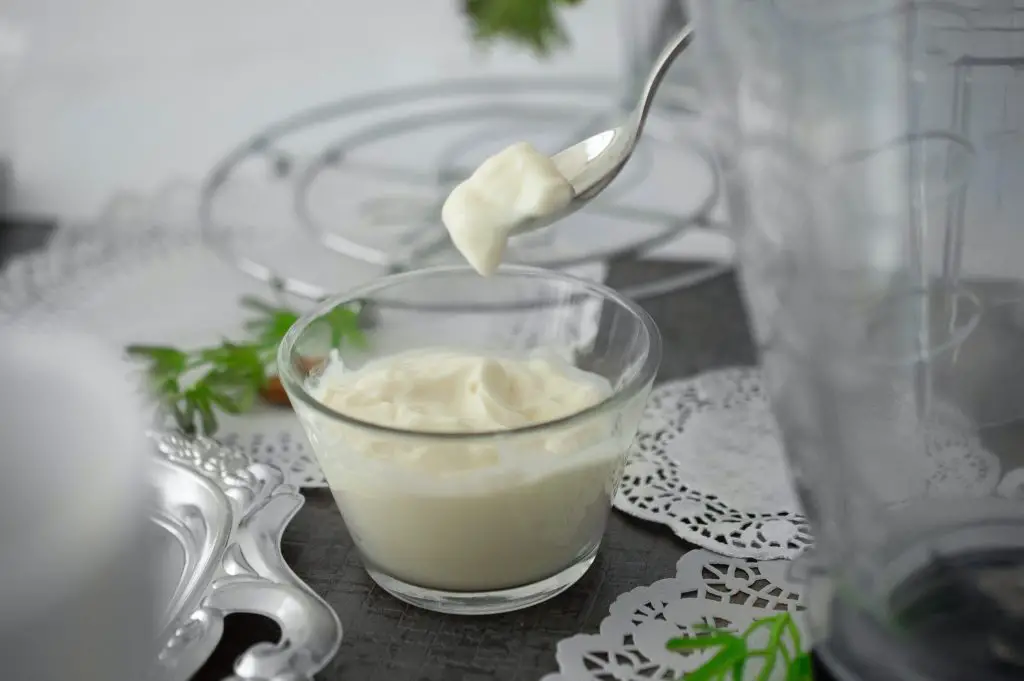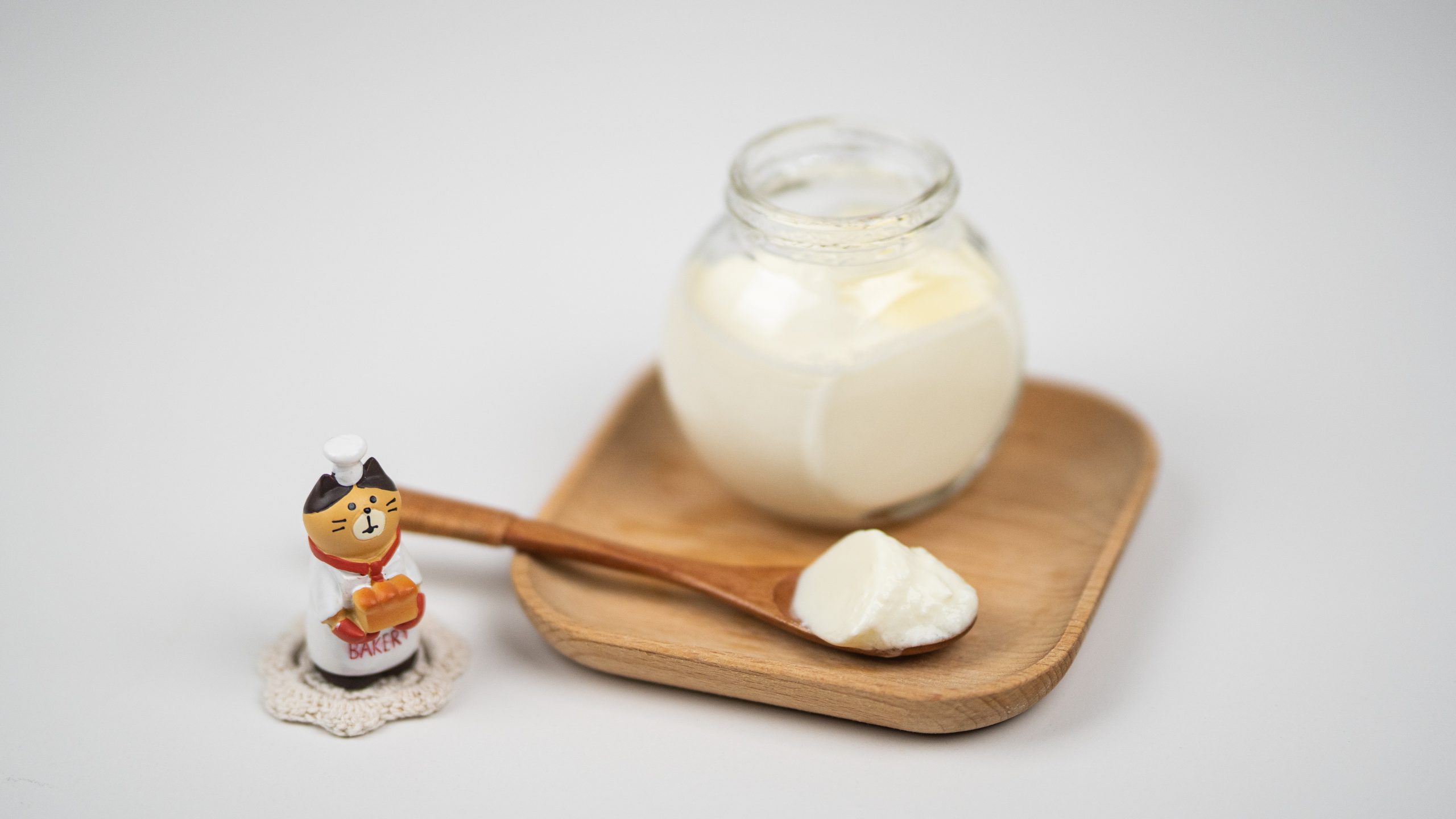Yogurt is a fermented dairy product known for its high protein content, natural tang, and gut-healing abilities.
Whether you want to increase its shelf life or are just in the mood for a healthy summer treat, you might be curious whether yogurt can be frozen without losing its quality.
This article explains whether or not yogurt can be frozen.

How to Freeze Yogurt?
You can freeze yogurt in a variety of ways. First, make sure to place the yogurt on the main shelf of the refrigerator. Please do not put it on the door shelf because it will not stay as cold. Another way to freeze yogurt is in ice cube trays. You can also freeze kefir or buttermilk, which is similar to yogurt.
1. Freeze in the Original Container
Simply placing the original container in the freezer is the simplest and fastest technique to freeze yogurt. Although you can use this method with bigger tubs, it works best with single-serving containers because you can thaw what you need.
The container seal may fail due to the yogurt’s expansion in the freezer. Place the individual container in a freezer bag before freezing if you want to prevent freezer burn or block out freezer odours.
2. In a Freezer Safe Container
Another choice is to part yogurt into little freezer-safe containers (like these from Ziploc, available at Target for $3), which will prevent wastage and allow you to split it according to how you intend to use it. Additionally, you can provide some space for the yogurt to expand. This strategy works especially well for yogurt that contains pieces of fruit or a layer of fruit because it helps the yogurt and fruit freeze more uniformly and ensures that the fruit is spread properly when the yogurt is thawed.
3. In a Tray for Ice Cubes
Yogurt can also be frozen in ice cube trays using a similar method. You can use Souper Cubes, which have a lid and cost $20 for a 1/2-cup tray from Williams Sonoma, or freeze the yogurt for several hours or overnight before transferring the cubes to a freezer bag long-term preservation. This technique is great for producing smoothies because you can combine the frozen yogurt cubes and other ingredients in the blender to get a creamy, foamy delight in a flash.
4. In Scoops
Scooping yogurt into freezer-safe containers and freezing it works best with thick Greek yogurt and larger tubs of yogurt; this is the fourth way. Using an ice cream scoop, distribute the yogurt onto a baking sheet lined with parchment paper. Before transferring the scoops to a freezer bag for longer-term storage, freeze them for several hours or overnight. If you want to use the yogurt for baking, you can even use a certain size ice cream scoop to precisely measure the amount of yogurt in each serving. This will save you time because there will be fewer ingredients to measure.
Yogurt shouldn’t be frozen for more than two months using any freezer method. When freezing any food, it’s a good idea to follow this rule of thumb because it makes it simple to keep track of what you have and when you need to utilise it. And always date and label yogurt before freezing it to maintain track.
Uses for Frozen Yogurt
When frozen and thawed, yogurt loses some creamy, smooth quality. Some yoghurt changes in texture and flavour when frozen, becoming tarter. Even though you can eat it on its own, try freezing it a bit first to see if you enjoy it; you could prefer particular brands or flavours to others. Also, keep in mind that yoghurt loses flavour and texture the longer it is frozen, so if you want to eat it with a spoonful, keep the freezing time to a minimum.
Using frozen yogurt in dishes where it doesn’t have to be thawed is one way to enjoy it. Smoothies are ideal, like this straightforward Fruit & Yogurt Smoothie or this Spinach–Avocado Smoothie. Shakes and smoothie bowls are also excellent.
If you decide to defrost the yogurt, use it in dishes where texture isn’t as crucial. Concentrate on meals that don’t require extreme smoothness but call for rich creaminess and tangy tanginess. Frozen yogurt can be used to make a creamy, savoury salad dressing or to marinate fish or poultry, which helps the flesh become softer. Another application for thawed frozen yogurt is in dips and spreads, provided they’re not intended to be extremely smooth.
Baking with frozen yogurt, especially yogurt in the freezer for more than two months, is another great application. Your best bets are cakes, quick bread, and muffins, but you may use thawed frozen yogurt in any recipe that calls for yogurt in the batter, including pancakes and waffles.
How to Defrost Yogurt?
Whatever method you use to freeze yogurt, the only way to thaw it is in the refrigerator, ideally overnight. Yogurt, like many dairy products, will slightly split when frozen, which may cause it to become watery or gritty. This makes properly stirring the thawed yogurt before usage a necessity. You may also process yogurt in a food processor to restore some of its smoothness if it separates considerably. Yogurt cannot be refrozen once it has been defrosted.
Can you Freeze Greek Yogurt?
One of the best ways to freeze yogurt is to use a small container. You can transfer the yogurt to another smaller container. Then, please place it in the freezer for a couple of hours. After that, stir the yogurt twice a day until it’s soft and spreadable.
While freezing yogurt doesn’t affect the probiotic bacteria, it can affect the texture. It will become harder or a bit softer than when it was first made. You can also use frozen yogurt in smoothies or baked goods. Remember that the texture may differ slightly depending on the Greek-style yogurt you buy.
You can freeze Greek-style yogurt in small containers. Labelling the containers is important because it helps you keep track of the food. Be sure to label the containers before freezing them.
Can you Freeze Kefir or Buttermilk?
If you are wondering how to store kefir or buttermilk, one easy method is to freeze the grains. Once frozen, these grains can last up to a year. Once defrosted, these grains can be used to make more kefir. The grains should be defrosted by placing them in the refrigerator overnight. It would help if you then rinsed them with fresh milk.
While freezing buttermilk or kefir can be a good way to store them for a long period of time, there are a few things to keep in mind. First, the texture of kefir will change when frozen. While it won’t be pleasant to drink straight from the freezer, kefir is great in smoothies and cooked dishes.
Next, you should place the thawed kefir in a container that fits the amount specified in the recipe. When placing the kefir in a container, leave a little head space for the liquid to expand.
How Freezing Affects Yogurt?
Yogurt can be securely kept for 1-2 weeks at 40°F (4°C) in a closed container in the refrigerator.
However, you can increase its shelf life to 1-2 months if you want to store it in the freezer.
When freezing yogurt, a few things to remember, including the texture and amount of active bacteria present.
Do Microorganisms that are Alive and Active Survive Freezing?
Any yogurt sold in the United States must contain milk and at least two of the bacterial strains Lactobacillus bulgaricus and Streptococcus thermophilus.
Some yogurt producers supplement these live, active cultures with different strains like Bifidobacteria and Lactobacillus acidophilus.
These dynamic, living cultures are commonly referred to as probiotics. Probiotic-rich foods like yogurt may have various health advantages, including improved digestion, lower cholesterol levels, and boosted immunity.
Live bacteria in yogurt that promote health are thermophilic, meaning they flourish in warm environments.
This range typically resides above 98°F (37°C) and below 130°F (54°C) for yogurt’s probiotics. They survive in your freezer for at least a few weeks, even if killed at greater temperatures.
In one experiment, L. bulgaricus and S. thermophilus, two common bacterial strains, were used to make frozen yogurt. Researchers discovered no discernible reduction in the number of germs in the yogurt after a 35-day freezing period.
According to researchers, the living bacteria may be latent until the yogurt is thawed.
It would help if you also considered the possibility that additional ingredients, such as fruit and grains, may make it harder for certain bacterial strains to survive.
Texture Alterations
The texture of yogurt that has been frozen vs yogurt that has not is the most noticeable distinction.
After freezing, some yogurts may appear substantially thinner or have a grainier texture.
As you defrost your yogurt, you frequently observe layered yogurt. This is due to yogurt’s protein networks collapsing when frozen. Water is released throughout the procedure, and when it freezes, it separates from the milk solids.
If you’re worried about texture, keep your thawed yogurt for a baking project or a smoothie because it doesn’t produce the smoothest sauces.
How Long can you Keep Frozen Yogurt in the Freezer?
The shelf life of Greek yogurt in the refrigerator is often about one to two weeks. If you keep it in the freezer, frozen yogurt (the variety that already comes frozen) can keep for up to three months after its “best-by” date has passed. Drinkable yogurt can last you an extra ten days. In most cases, low-fat yogurt has an extended shelf life of one to two weeks.
Is it Possible to Freeze Yogurt and Eat it as if it were Ice Cream?
Frozen yogurt has become an increasingly popular substitute for ice cream. The correct response is “yes” It is possible to freeze yogurt and consume it like ice cream. The consistency and flavour are almost similar. However, there is less fat and fewer calories in this option.
Conclusion
A well-liked, delectable, and useful fermented dairy product is yogurt. It has a lot of benefits for your health.
Live and active microorganisms in yogurt endure freezing. To ensure it’s still ok to eat, you should let it thaw overnight in the fridge.
If you intend to consume the yogurt straight from the container, look for stabilisers, as yogurts without them tend to become gritty when frozen.
Whether or not a frozen yogurt contains stabilisers, most thawed yogurts can be used in baking or cooking.

